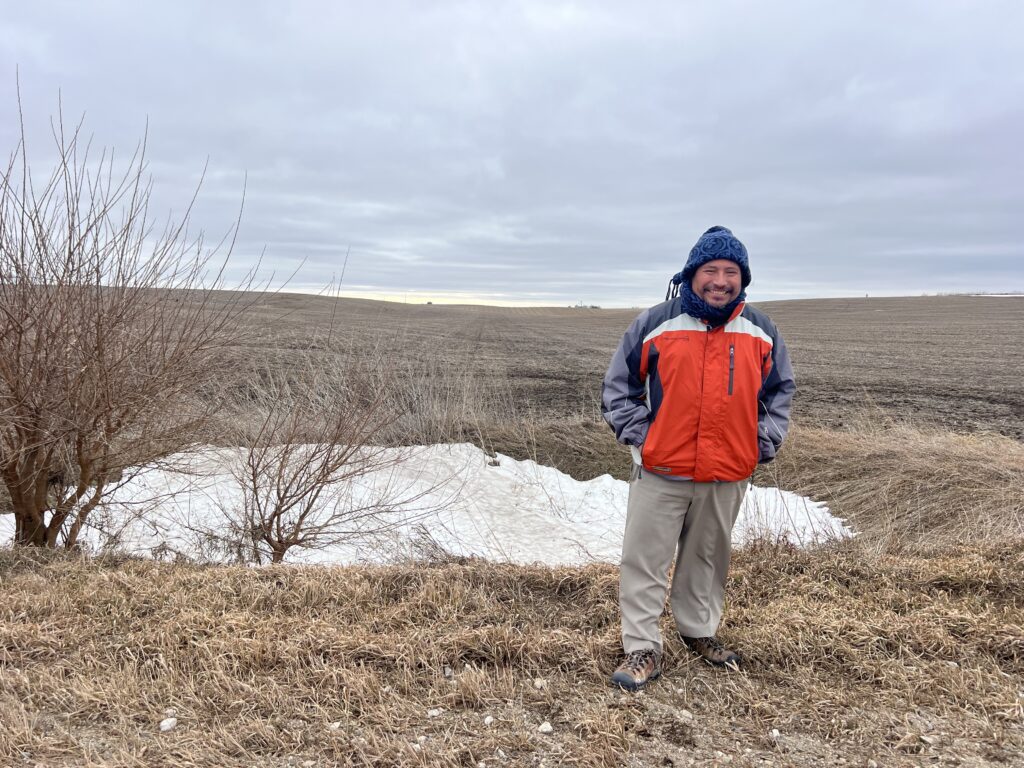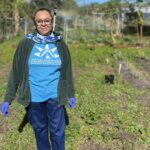In America’s agricultural heartland, a small group of immigrant farmers look to ancient methods to help modern farming respond to the climate crisis.
Producer Anja Nilsson reports from Nebraska on Maya farmers from Latin America who employ farming methods that conserve water, increase biodiversity, and reduce carbon emissions.
310 Acres and a Milpa
by Anja Nilsson
Luis Marcos stood at the edge of a country road in northeast Nebraska on a windy morning in February, surrounded by farmland in every direction. He looked out at yellow-brown dirt fields stretching out across the Great Plains, only interrupted by the occasional truck or car.
This visual monotony is the result of farmers planting only one crop at a time on each field. It’s called monoculture farming, and it’s one method farmers use to increase profits. But it’s also an environmental disaster waiting to happen. It removes everything on the land that isn’t the cash crop, such as indigenous trees and grasses. These roots prevent the valuable Nebraska soil from being swept up by the wind.
That’s what happened in the Dust Bowl of the 1930s, when conventional agriculture and droughts dried the soil, creating massive dust storms that destroyed hundreds of thousands of livelihoods. Keeping the soil on the ground is also a climate change priority. Top soil is the planet’s second largest storage of carbon after oceans. If all the world’s soil were to be destroyed, it would triple the amount of carbon released into the atmosphere.
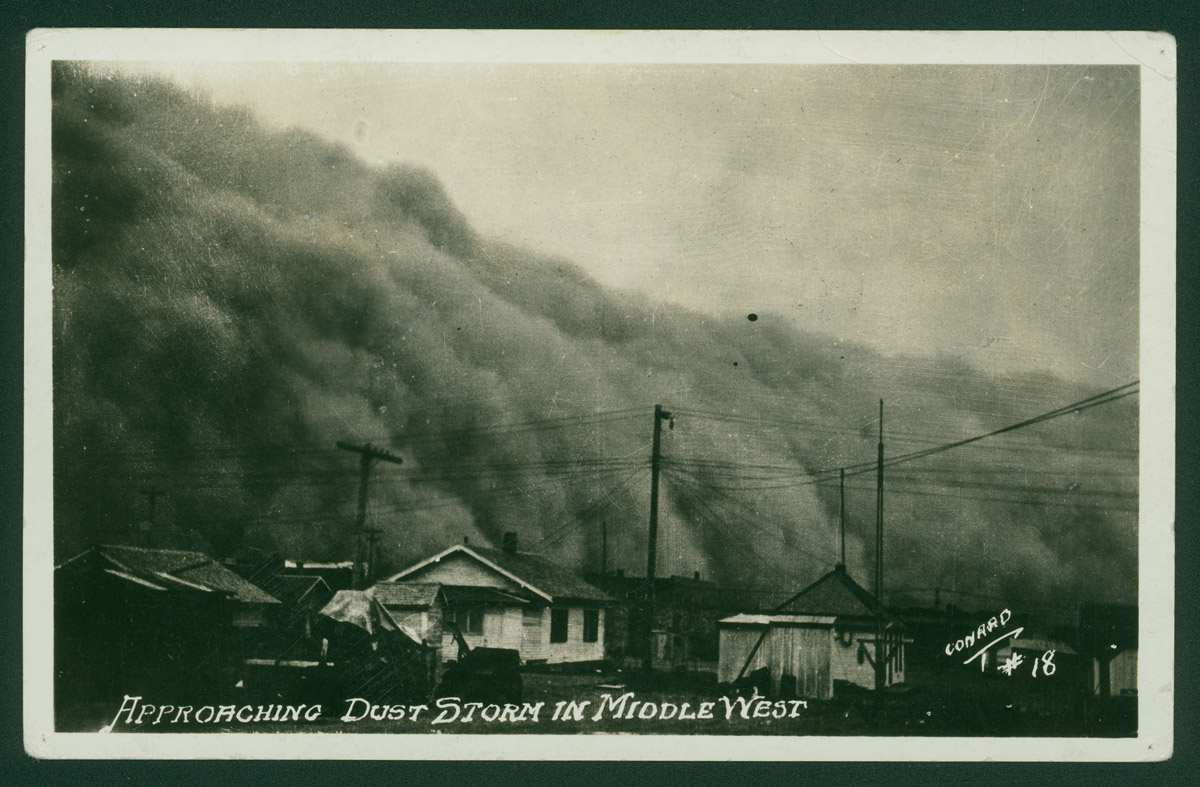
An archival photo of a dust storm approaching houses in Nebraska in the 1930s. Photo Credit: F.D. Conard.
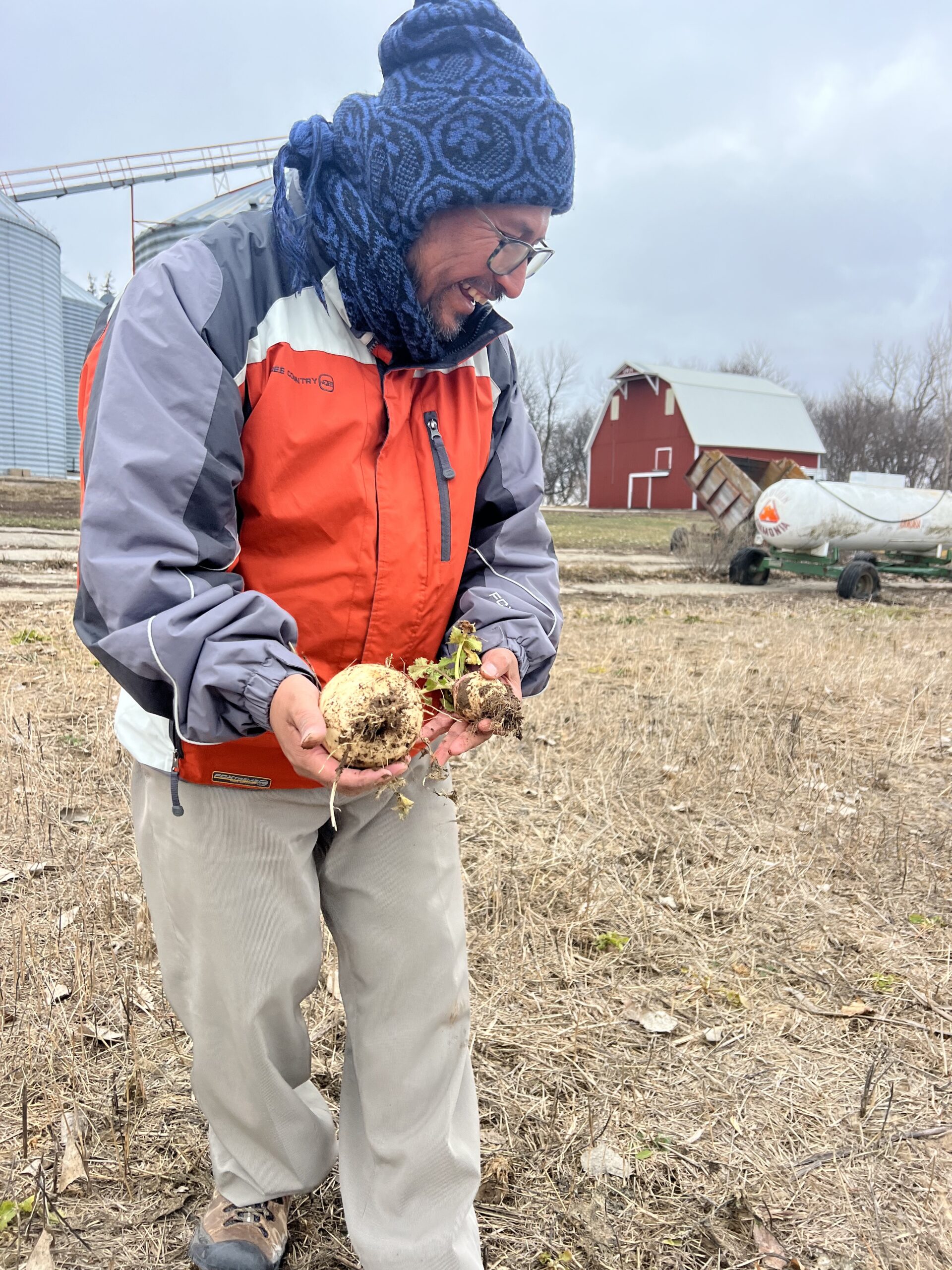
Luis Marcos pulling up root vegetables from the milpa acre. Photo Credit: Anja Nilsson.
But Luis Marcos and his Maya community—immigrants from Central America—believe they have found a solution to help Nebraska’s farming problem. It’s a millenia-old agricultural practice called the milpa cycle. The milpa is a complex agroforestry system where multiple crops and plants are planted on the same field of land. These plants provide nutrients, shade, and moisture to each other and help each other grow. The milpa way of planting also ensures roots in the ground year-round that keep the soil from flying away.
Luis is a political leader for about 20,000 Maya living in Nebraska and the President and CEO of the newly-formed Maya Economic Development Corporation. Most of the Maya came to Nebraska in the 1990s when they were recruited by the U.S. meatpacking industry during a time of civil war and genocide in Guatemala. The Maya have their own government. Their own calendar. Their own origin story. What the Maya in Nebraska don’t have is land of their own. This is especially hard since their religious and spiritual mythology ties them to the land. The Maya believe that all humans were created from corn.
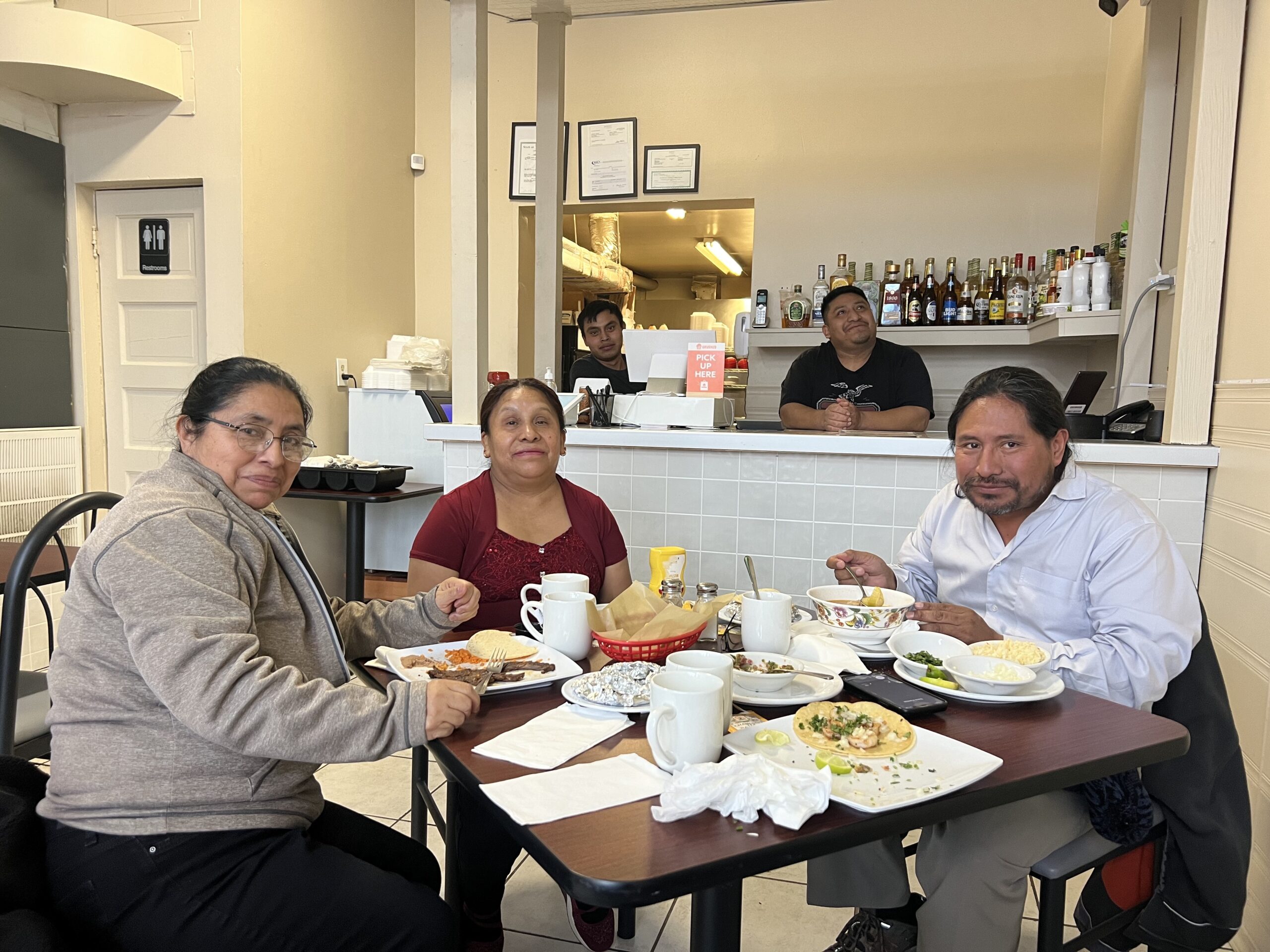
Luis Marcos, Juana Domingo Andres (Luis Marcos’ wife), and Maria Gaspar (a Maya elder) eating lunch at El Patron. Maria Gaspar and her son, Gaspar Gaspar, are the owners of El Patron, a restaurant in Omaha serving primarily Mexican food. Gaspar Gaspar is also a board member of the Maya Economic Development Corporation. Photo Credit: Anja Nilsson.
For the Maya, having land in Nebraska to plant the milpa is about their cultural survival. Two years ago, Luis Marcos, together with other Maya elders, and partners such as Regenerate Nebraska and The Nature Conservancy, planted the milpa cycle on one acre of land borrowed from a local farmer. The acre blossomed into an oasis of color amidst yellow-brown monotony.
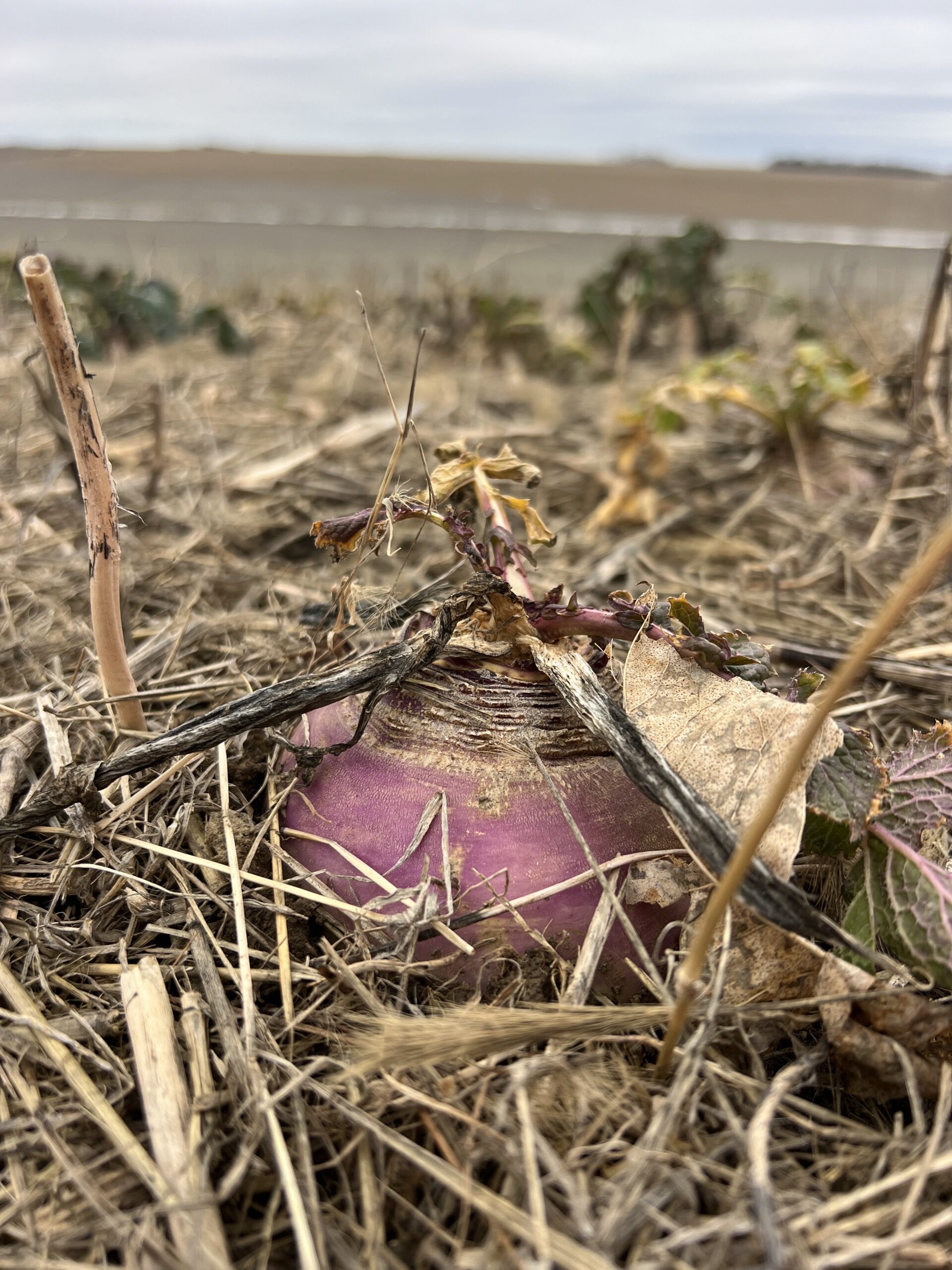
A turnip sticking out of the ground on the acre of land where Luis, the Maya, and partners planted the first Nebraska milpa. Photo Credit: Anja Nilsson.
The milpa is also an example of what policymakers are calling nature-based solutions to climate change — a way to use natural features and processes to combat climate change. The United Nations Intergovernmental Panel on Climate Change (IPCC) estimates that nature-based solutions, like the milpa, could contribute up to 30 percent of the emission mitigation needed to keep temperatures from rising above 1.5 degrees Celsius.
Indigenous peoples are global experts on nature-based solutions. They are custodians of 80 percent of the world’s biological diversity. For example, lands under Indigenous peoples in Latin America have 50 percent lower deforestation rates, and lands managed by Indigenous peoples have higher biodiversity than protected lands in the same area managed by conservation groups.
Environmental and conservation movements have been slow to recognize this. In the past, conservation efforts displaced Indigenous peoples from their land. But, according to Margarita Mora, the Senior Managing Director of Partnerships at Nia Tero, that changed with the ratification of the Kunming-Montreal Global Biodiversity Framework by all United Nations member states—except the United States—in 2022. Nia Tero is an NGO that works with Indigenous peoples to strengthen the legal territorial protection of their land and cultural plans. For the first time, the 2022 Global Biodiversity Framework recognized Indigenous people’s rights to their territories and their role in nature conservation. It also set a global target of preserving and managing 30 percent of the world’s biodiversity on land and in oceans by 2030 that countries are working to meet.
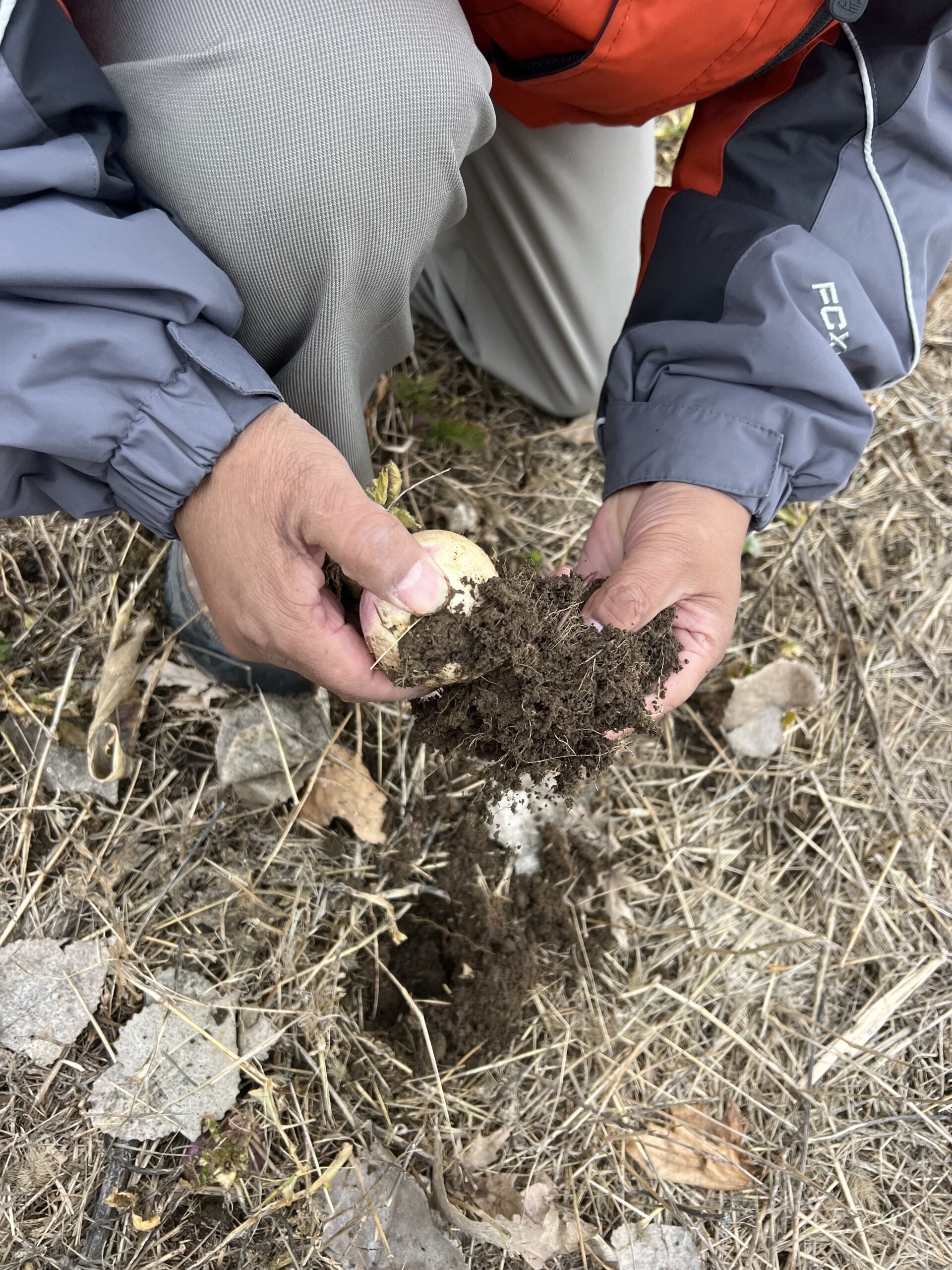
Luis Marcos pulls out a turnip to show the deep web of roots criss-crossing the soil in the land where the Maya planted the milpa cycle. Photo Credit: Anja Nilsson.
“For the first time, Indigenous peoples’ rights are front and center, and it [the framework] also recognizes that a pathway to achieve these international agreements is recognizing Indigenous peoples’ guardianship of their territories,” said Margarita Mora. She stressed that indigenous self-determination and autonomy are critical to achieving our climate goals.
Luis and the Maya community hope to implement the milpa on a larger scale. They are currently trying to secure funding to buy 310 acres of farmland in northeast Nebraska. They hope to plant their milpa and have a place of their own—a place where they can decide their own future and put down permanent roots far from the violence they had to escape. They hope to be on the land in 2025.
Credits
Hosted by Iggy Monda
Story Produced by Anja Nilsson
Edited by John Rudolph, Quincy Surasmith, and Iggy Monda
Fact Checking by Julie Schwietert Collazo
Engineering by Jocelyn Gonzales
Theme music by Fareed Sajan
“Home, Interrupted” show logo by Daniel Robles
Feet in 2 Worlds is supported by the John D. and Catherine T. MacArthur Foundation, The Ford Foundation, the David and Katherine Moore Family Foundation, the Fernandez Pave the Way Foundation, an anonymous donor, and contributors to our annual NewsMatch campaign.


